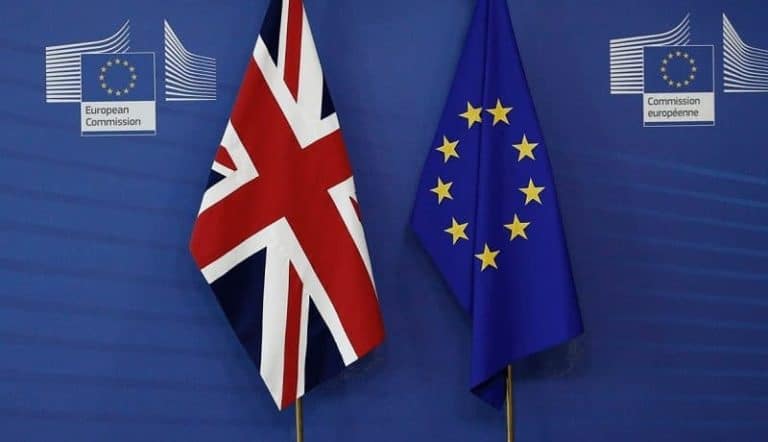Brexit, Britain’s split from the European Union, will have ripple effects across economic industries. The art and the antique industry is no exception. But exactly what Brexit means for antiquing in Europe is up in the air. “Art and Antiques” has been an active, categorical fixture in the marketplace for more than a hundred years. However, industry experts anticipate Brexit will have multiple impacts. While some are optimistic about the outcomes, others caution a backlash. For example, will the UK seize Brexit changes as a golden opportunity to improve its competitive position in the global antique market? Or will Brexit hinder the UK’s art and antique market by making it more difficult for dealers to conduct business within Europe and around the world?
Here, we weigh Brexit’s potential pros and cons on the antique collecting and trading industry. Ultimately, Brexit means changes for antiquing in Europe.
Positive effects of Brexit on buying and selling antiques in the EU

Selling power
The pound may lose its value against the Euro, but this could be a good thing. For example, merchandise brought from the UK would offer better value for money in the broader European market. Plus, a weaker pound presents significant opportunities for sellers. Why? It is extremely attractive to foreign buyers and thus has the potential to drive significant competition from bidders across the world. This will make buying antiques and art in the UK much cheaper. Likewise, it may galvanize the antique collecting and trading market in the UK.
Legislation
Brexit may present the government with opportunities to remove unnecessary red tape that discourages buyers and sellers. Some possible actions include removing costs and regulatory burdens imposed on the British art market. For example, Britain may now be able to make beneficial changes on issues such as VAT on art imports, export licensing, and legislation that restricts artist resale rights. If accomplished, new changes could amount to a significant boost to the British art and antique market.
New international reach
In terms of cross-border trade, the British art market consists of around 20% of trade with the European Union and around 80% with non-EU countries. The London antique trading market, in particular, has a large and global presence. Therefore, the concern of many antique art dealers in the UK is how the UK will compete with other international centers of art such as New York, Hong Kong, and Switzerland. Other EU countries lack the international competitive edge that the UK enjoys. The EU is more focused on harmonization rather than stimulating individual antiques trading markets. Brexit could allow the UK to think strategically. As a result, it could become one of the leading centers of art and antique trading in the world – and not just the EU.
London as the center of the international art market in Europe
Brexit may already be building momentum for the art and antique market. According to Christopher Battiscombe, Director General at the Society of London Art Dealers (SLAD), “Many measures introduced by the EU have been far from helpful to the art trade and I do not see any other European city supplanting London as the center of the international art market. In this respect, it has been interesting to note the large number of European dealers establishing branches in London since the EU referendum.”
Duties and Taxes
The UK already fairs better when it comes to duties and taxes. Currently, EU countries have varying rates of import VAT with the UK charging the lowest at 5%. Other EU countries charge much higher import VAT, with Italy leading at 22%. In fact, antique dealers in countries with higher import VAT often import antiques through the UK into mainland Europe to take advantage of the UK’s lower import VAT.
The art and antiques market could even see a boom given Brexit. Antiques sold to EU countries would be considered an export. Therefore, VAT charged on antiques could be reclaimed. Moreover, the threat of an increase in import VAT across the EU is a concern for many antique dealers and auction houses. When the UK leaves the EU customs union, imports from the EU will become subject to the same rules as imports from outside the EU. Essentially, the government could determine an even lower rate of import VAT.
Importing antiques from the EU and the rest of the world, into the UK
As indicated in the above section, antiques imported into the UK, from EU states and the rest of the world, are since January 1st 2021 subject to import VAT at 5%. This VAT rate of 5% applies whether these antiques are imported privately (with the purpose of keeping them for a collection) or with the intent of reselling them (for instance by a VAT-registered businesses).
In order to qualify for the 5% VAT import rate on antiques and works of arts, private collectors and VAT-registered businesses may need to provide satisfactory documentary evidence establishing that the imported item was manufactured more than one hundred years before the date of importation. Items which are neither antiques, works of art nor collectors’ items are subject to the standard 20% VAT import rate. In addition to import VAT, no duty is charged on works of art, collectables and antiques imported into the UK (or the EU), regardless of their country of origin.
In order to benefit from the reduced rate of 5% import VAT and the import tariffs/customs duties exemption, it is absolutely necessary to know the correct commodity codes which should be indicated on import declaration documents. For instance, customs codes for art/antiques and collectables are 9701–9706. Additional codes can be found in Chapter 97 of the UK General Customs Tariff.
Here below is a non-exhaustive list of forms needed for an import declaration of goods not intended for your personal use, such as art and antiques intended for onward sale
- C88 or C88a (importing by post) is the main customs form for international trade in the UK. This form can be used to declare import, export and the transit of art and antiques across EU member states.
- C79 – This is the import VAT certificate that will allow importer to reclaim VAT paid on imported goods. This must be done by the dealer (not the shipper)
- Age declaration: See Notice 362: imported antiques Your written declaration should read as follows: ‘I declare that, to the best of my knowledge and belief, the articles in the form as imported were wholly manufactured or produced more than 100 years before the date of importation’. Only you, as the importer, can make this declaration.
- Evidence of age: See Notice 362: imported antiques
- a certificate of age given by the seller
- a certificate of age given by an independent expert in the country where the goods were acquired
- the catalogue of an auction sale
- a booklet or other document describing the article
Artist’s Resale Right (ARR)
The Artist’s Resale Right (ARR), is one of the biggest impediments to the development of the antique trading market in the UK. With Britain leaving the EU, the government could see a benefit to scrapping the ARR altogether. This would enable London to compete on a level playing field, especially with other cities that do not charge the ARR. Consequently, many people would feel inclined to buy antiques in London.
Negative effects of Brexit on buying and selling antiques in the EU

Purchasing power
Merchandise brought from the EU might offer a lower money value in the UK market. While a weaker Pound against the Euro offers a potential benefit to sellers buying antiques and art within the UK to sell internationally – the same may not be true on the flip side.
Custom clearance and increased paperwork
What Brexit means for antiquing in Europe could result in additional paperwork. According to Anthony Browne, Chairman of the British Art Market Federation (BAMF), one of their focuses is customs clearance and the speed of cross-border trade. Dealers should use experienced carriers and professional agents to facilitate filing forms. Established shippers are prepared to handle the formalities in warehouses to minimize administrative paperwork at the borders. Also, UK export licenses are still paper-based. BAMF has been pressing for digital export licenses, for which the government has now allocated funds to begin trial runs. There may be snags that cause delays and costs as the process becomes more familiar.
Experts weigh in
According to Freya Simms, Chief executive of LAPADA, major shippers have provisioned for bonded warehouses. Therefore, stock can clear customs as well as be temporarily housed without import duties. However, “smaller, independent dealers might have issues adapting and continuing to run profitably in the face of increased paperwork, cash flow considerations and access to their stock,” Simms says. “For these dealers, which make up a large percentage of our membership, the reality of Brexit could place a disproportionate administrative and financial burden.”
“To complete customs clearances and prepare documents, shippers will need full descriptions, number of packages, gross/net weights, values, and currencies. Dealers will have to make sure their paperwork is compliant and sent to the shippers in advance before export,” says Victor Khureya, Operations Director at specialist shipper Gander and White.
The British Antique Dealers’ Association (BADA) recommends considering the use of a specialist shipper or carrier for all shipments. “Dealers will need to ensure that the correct customs classification codes and procedure codes are used,” says Mark Dodgson, Secretary-General of BADA. “Those expecting to move goods between the UK and the EU should make sure they have an EORI number.”
Duties and taxes
Common barriers to trade that exist between different nations will certainly have a strong impact. Brexit may lead to an increase in import VAT on art as the government focuses on VAT in an effort to raise funds. As more people leave the UK with their antique art, EU countries may be forced to levy import VAT on the antiques upon importation into the EU. This would make the UK less attractive as an antique trading and investment destination. As a result, it may lead to a decline in the antique trading market in the UK.
Art and antique dealers in both markets would find difficulties in conducting seamless business as in a free market. This particularly concerns imports from the EU to the UK: Of the £4735m worth of art and antiques exported from the UK in 2014, just £92m went to other parts of the EU. Imports from the EU were more substantial at £357m. Therefore, Brexit will mainly affect the import of antiques from the EU to the UK.
Higher taxes on art and antiques will affect art and antique fairs in the UK, which deals with many buyers from the EU. International auction houses in London would also be affected by the EU import VAT. Antique dealers, art fairs, and auction houses employ many people from the EU. Brexit could mean that these people have to obtain visas to work in the UK.
Loss of valuable artworks and antiques
Art collectors may decide to leave the UK for other countries with favorable markets. If so, they may leave with important artwork and antiques. One scenario is buyers purchase culturally valuable art and antiques and keep them within the UK. However, the lack of finances may make this an unlikely option. With dwindling public finances, there will be less funding available for antique trading. If the situation continues, public museums may be forced to start charging visitors to view antiques in their collection. This could result in significant antiques leaving the country.
What Brexit means for antiquing in the EU

Overall, there seems to be real optimism among many power players in the British art and antique market about what Brexit means for antiquing in the UK. The potential increase in sales and revenue from taxes and jobs in the art and antique industry are positive changes Brexit may bring. There will be a two-year period of negotiation, though. Trade and market relations between the UK and other EU countries may remain the same during the negotiation period.
The antique collecting and trading market has survived major market collapses. It has even thrived during market breakdowns due to wars and other economic collapses. Given the history, antiquing will very likely survive Brexit as well. Further, the change in the European economy may only have a local impact. It may continue to run without any major disruption globally.



